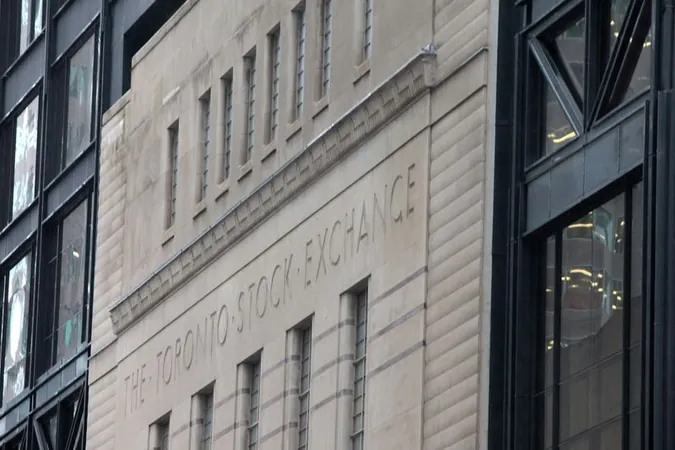
TSX Hits Four-Week Low as Investors Brace for Turbulence
2025-01-13
Author: Emily
Overview
In a turbulent session, Canada's main stock index, the S&P/TSX composite index, experienced a significant drop, concluding the day at 24,536.32—down 231.41 points or 0.9%. This marks its lowest closing level since December 19, raising concerns among investors already uneasy about the forthcoming changes in the economic landscape.
Reasons for the Decline
The decline is largely attributed to a continuing sell-off in the bond market, prompting investors to free up cash. Many are positioning themselves strategically in anticipation of potential volatility, particularly linked to the imminent imposition of trade tariffs by the incoming U.S. administration. U.S. President-elect Donald Trump, set to take office on January 20, has openly threatened to impose hefty tariffs—up to 25%—on imports from Canada, a nation that sends approximately 75% of its exports south of the border.
Investor Insights
Given this backdrop, Mike Archibald, a portfolio manager at AGF Investments, remarked, "We're getting ahead of earnings season, we're getting ahead of inauguration, and there's still a high level of uncertainty around what's coming next." He noted that his firm has been raising cash reserves to prepare for the potential market fluctuations expected in the coming weeks.
Sector Performance
Energy stocks bore the brunt of the downturn, with the energy sector’s value declining by 1.8% even as oil prices reached a seven-month high. Canadian Natural Resources Ltd saw its shares tumble by 3.9%, reflecting wider fears about the impacts of trade policies on commodity markets.
Meanwhile, the materials sector, which encompasses mining and fertilizer stocks, fell by 1.6%. The recent increase in the U.S. dollar, reaching a more than two-year high, contributed to a dip in gold prices, further aggravating the situation. The U.S. 10-year yield, a critical benchmark for global borrowing costs, also surged to a 14-month high, putting additional pressure on equity markets.
Additionally, investors observed lagging performance in the utilities and technology sectors, which fell by 1.2% and 1% respectively. Archibald cautioned that high bond yields would continue to create a shaky environment for stocks, stating, "Until you get a cooling in the movement of bond yields, I think stocks are going to be fairly volatile."
Outlook
The road ahead remains uncertain, with many investors wary of how geopolitical shifts and economic variables may unfold in 2023. Stay tuned as we continue to monitor and analyze these developments.









 Brasil (PT)
Brasil (PT)
 Canada (EN)
Canada (EN)
 Chile (ES)
Chile (ES)
 Česko (CS)
Česko (CS)
 대한민국 (KO)
대한민국 (KO)
 España (ES)
España (ES)
 France (FR)
France (FR)
 Hong Kong (EN)
Hong Kong (EN)
 Italia (IT)
Italia (IT)
 日本 (JA)
日本 (JA)
 Magyarország (HU)
Magyarország (HU)
 Norge (NO)
Norge (NO)
 Polska (PL)
Polska (PL)
 Schweiz (DE)
Schweiz (DE)
 Singapore (EN)
Singapore (EN)
 Sverige (SV)
Sverige (SV)
 Suomi (FI)
Suomi (FI)
 Türkiye (TR)
Türkiye (TR)
 الإمارات العربية المتحدة (AR)
الإمارات العربية المتحدة (AR)